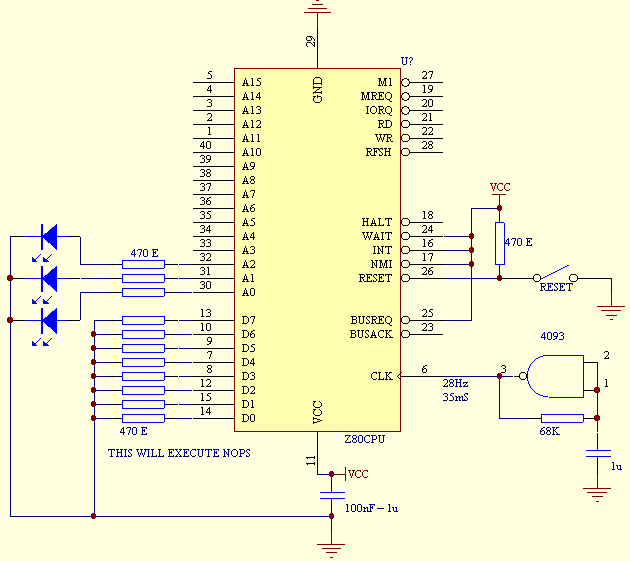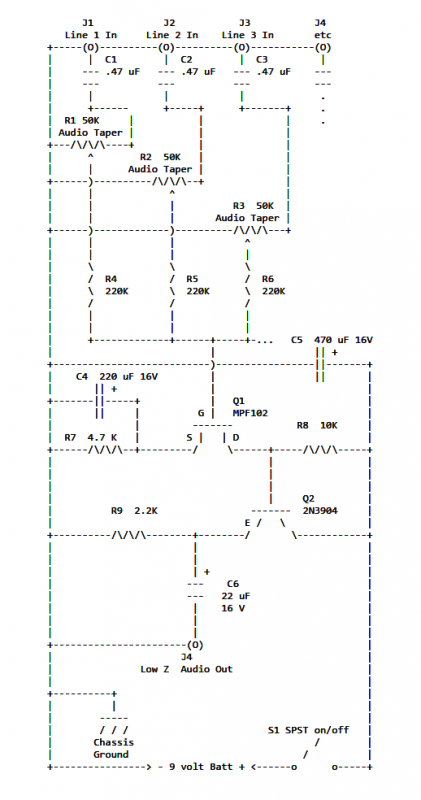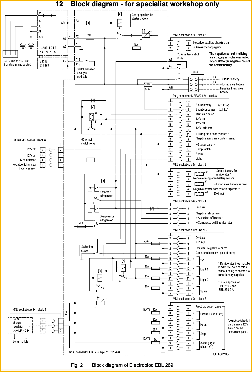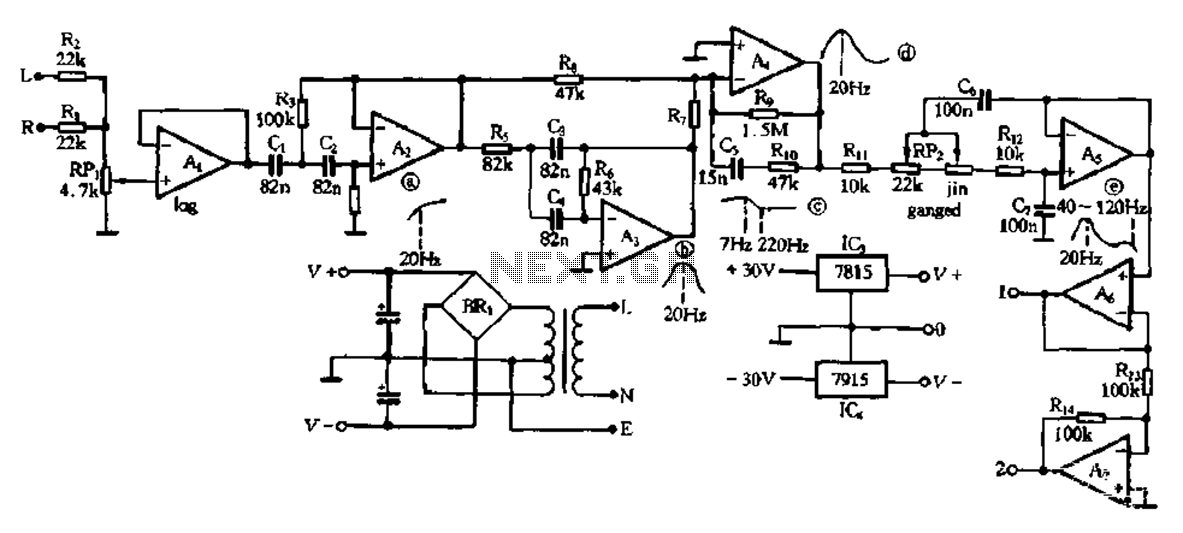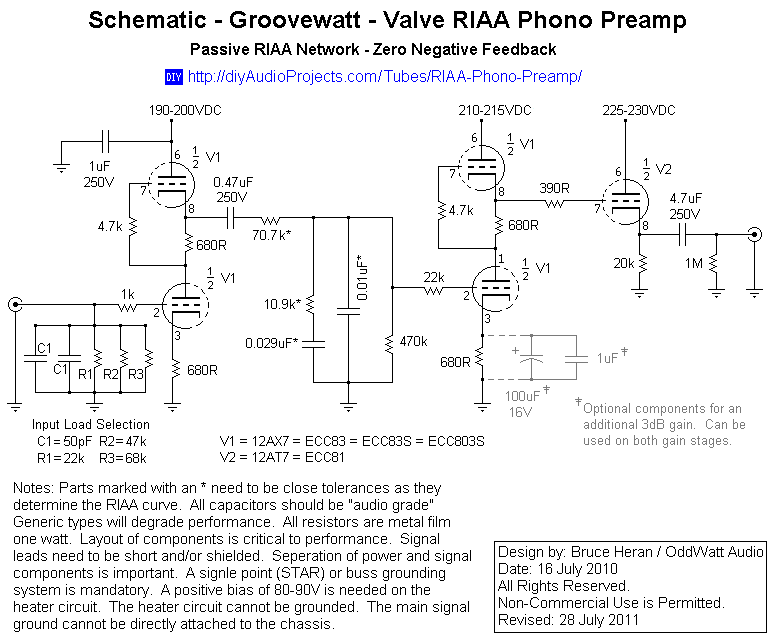
LTC1042 wind charger circuit schematic project
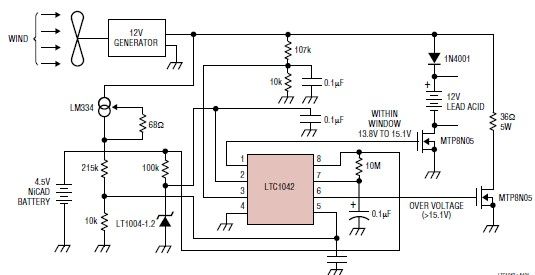
This simple wind charger circuit project is designed using the LTC1042 monolithic CMOS window comparator, manufactured by Linear Technology. The wind charger circuit utilizes wind power to generate the energy necessary for charging Ni-Cd or lead-acid batteries. When the generator voltage output is below 13.8V, the control circuit is activated, allowing the Ni-Cd battery to charge while the lead-acid battery remains uncharged. If the generator voltage exceeds 15.1V, typically due to high wind speeds or a fully charged 12V battery, a fixed load is engaged to limit the generator's RPM, thereby preventing potential damage.
The wind charger circuit primarily employs the LTC1042, which serves as a window comparator to monitor the voltage levels of the generator output. The circuit is designed to operate within specific voltage thresholds to ensure safe and efficient charging of the batteries. The LTC1042 compares the generator voltage against preset reference levels, activating the charging process when the voltage is sufficiently low and disengaging it when the voltage rises too high.
The LM334 current source plays a crucial role in regulating the charging current to the Ni-Cd battery, ensuring that it receives an appropriate amount of charge without exceeding safe limits. This is particularly important for maintaining the longevity and performance of the battery. The circuit's design effectively prevents overcharging, which can lead to battery damage or reduced lifespan.
In scenarios where the generator voltage exceeds the upper threshold of 15.1V, the circuit automatically connects a fixed load. This load serves to dissipate excess energy generated by the wind turbine, thereby controlling the RPM of the generator. By limiting the RPM, the circuit mitigates the risk of mechanical failure or damage to the generator components, which could occur under excessive wind conditions.
Overall, this wind charger circuit is an efficient solution for harnessing wind energy to charge batteries, providing a sustainable power source while incorporating safety features to protect both the generator and the batteries involved. The careful selection of components and the design of the control mechanisms ensure reliable operation in varying wind conditions.This simple wind Charger circuit electronic project is designed using the LTC1042 monolithic CMOS window comparator, manufactured by Linear Technology. This Wind charger circuit electronic project use the wind power to produce the energy required to charge Ni-Cd or Lead Acid batteries.
If generator voltage output is below 13. 8V, the control circ uit is active and the NiCad battery is charging through the LM334 current source (the lead acid battery is not being charged). If generator voltage exceeds 15. 1V (a condition caused by excessive wind speed or 12V battery being fully charged) then a fixed load is connected thus limiting the generator RPM to prevent damage.
🔗 External reference
The wind charger circuit primarily employs the LTC1042, which serves as a window comparator to monitor the voltage levels of the generator output. The circuit is designed to operate within specific voltage thresholds to ensure safe and efficient charging of the batteries. The LTC1042 compares the generator voltage against preset reference levels, activating the charging process when the voltage is sufficiently low and disengaging it when the voltage rises too high.
The LM334 current source plays a crucial role in regulating the charging current to the Ni-Cd battery, ensuring that it receives an appropriate amount of charge without exceeding safe limits. This is particularly important for maintaining the longevity and performance of the battery. The circuit's design effectively prevents overcharging, which can lead to battery damage or reduced lifespan.
In scenarios where the generator voltage exceeds the upper threshold of 15.1V, the circuit automatically connects a fixed load. This load serves to dissipate excess energy generated by the wind turbine, thereby controlling the RPM of the generator. By limiting the RPM, the circuit mitigates the risk of mechanical failure or damage to the generator components, which could occur under excessive wind conditions.
Overall, this wind charger circuit is an efficient solution for harnessing wind energy to charge batteries, providing a sustainable power source while incorporating safety features to protect both the generator and the batteries involved. The careful selection of components and the design of the control mechanisms ensure reliable operation in varying wind conditions.This simple wind Charger circuit electronic project is designed using the LTC1042 monolithic CMOS window comparator, manufactured by Linear Technology. This Wind charger circuit electronic project use the wind power to produce the energy required to charge Ni-Cd or Lead Acid batteries.
If generator voltage output is below 13. 8V, the control circ uit is active and the NiCad battery is charging through the LM334 current source (the lead acid battery is not being charged). If generator voltage exceeds 15. 1V (a condition caused by excessive wind speed or 12V battery being fully charged) then a fixed load is connected thus limiting the generator RPM to prevent damage.
🔗 External reference

